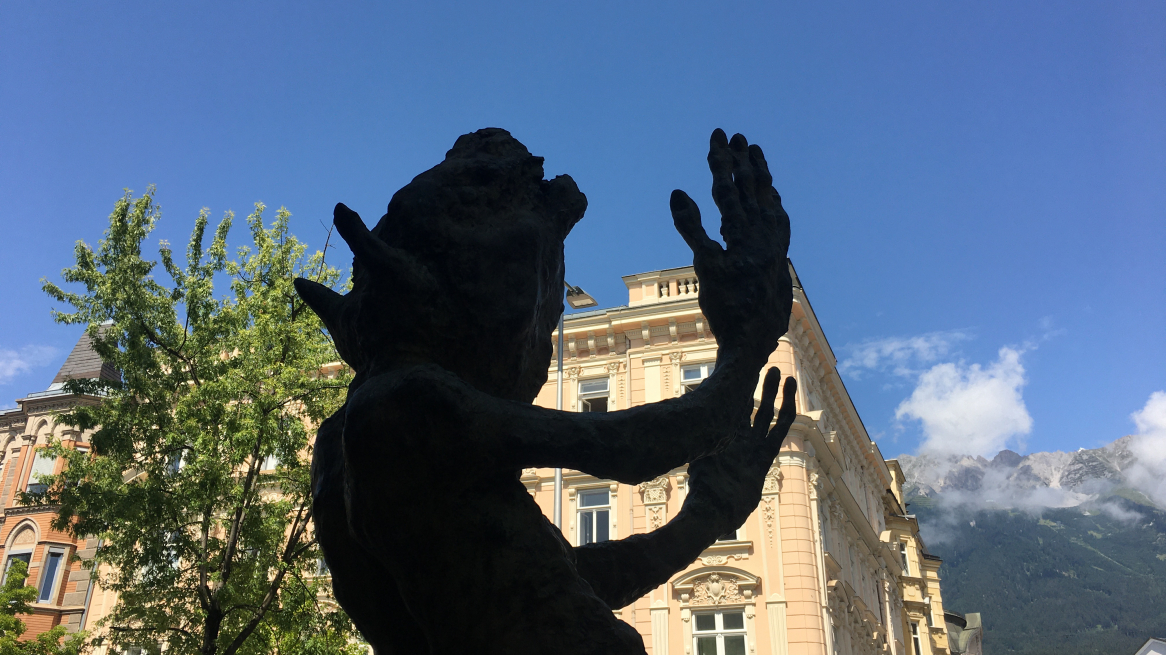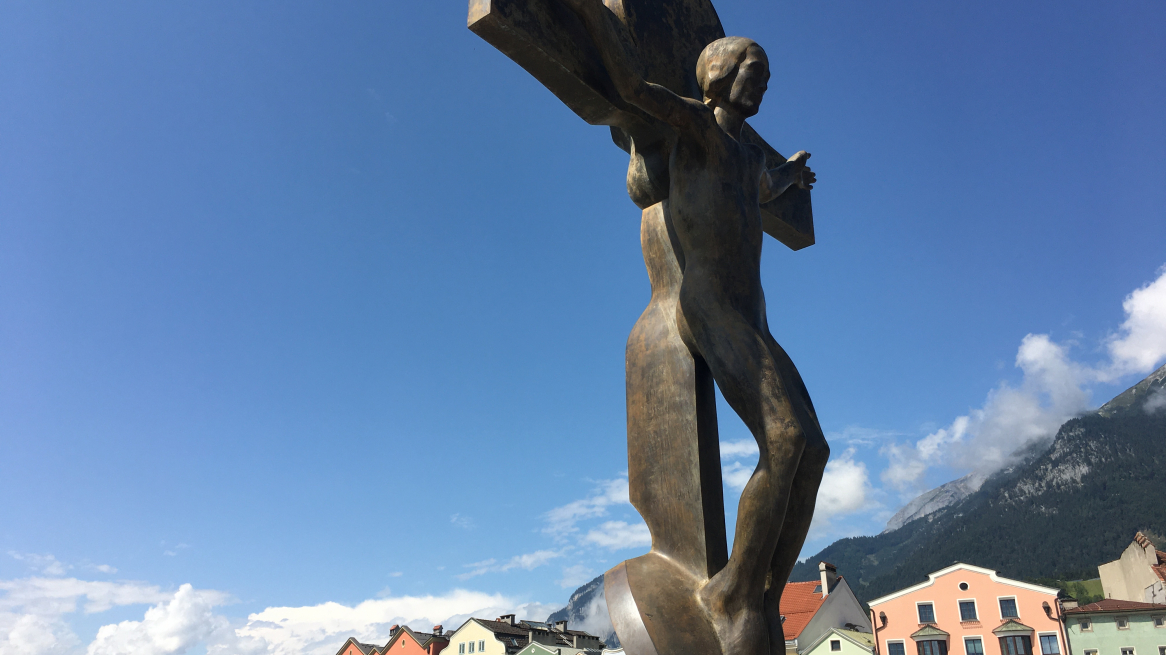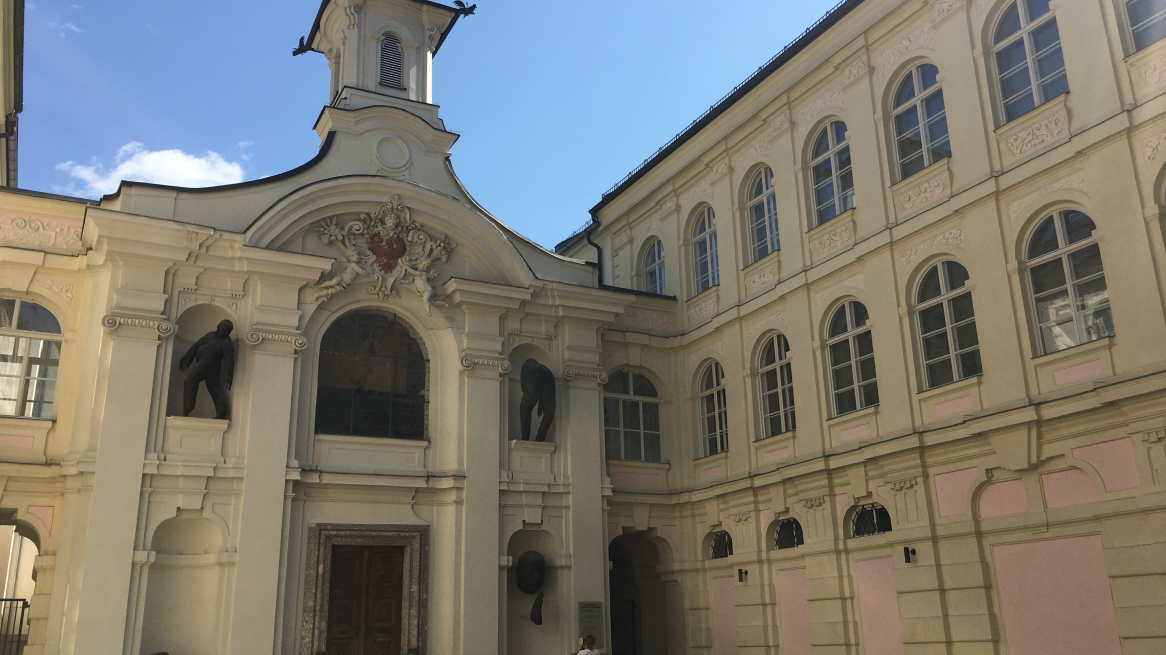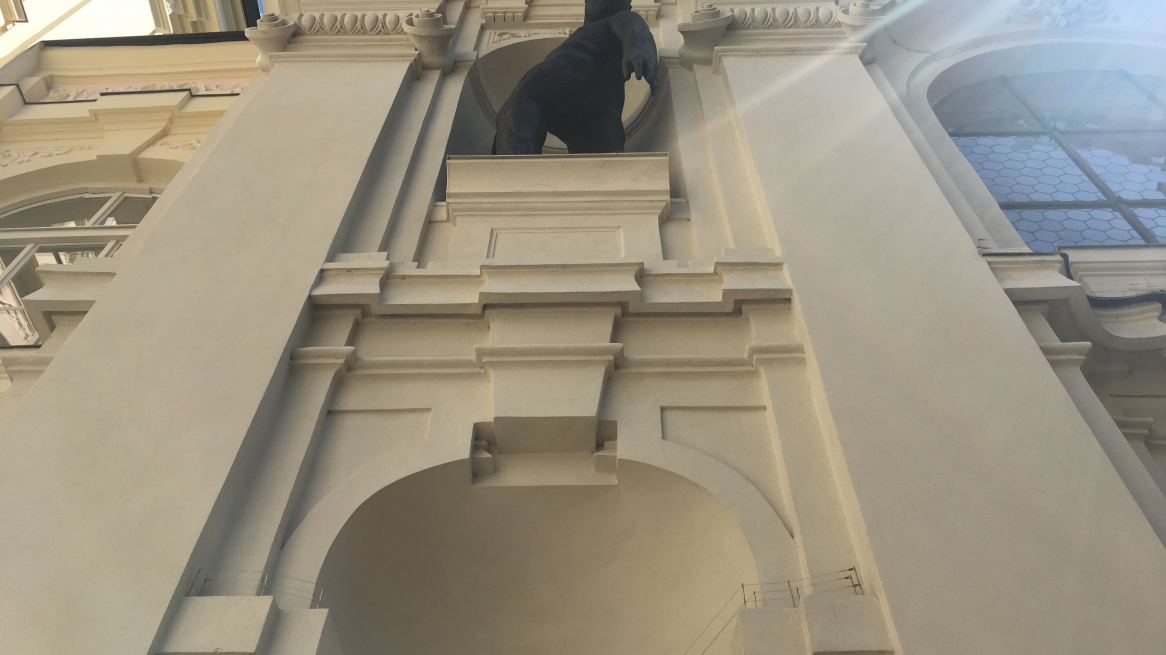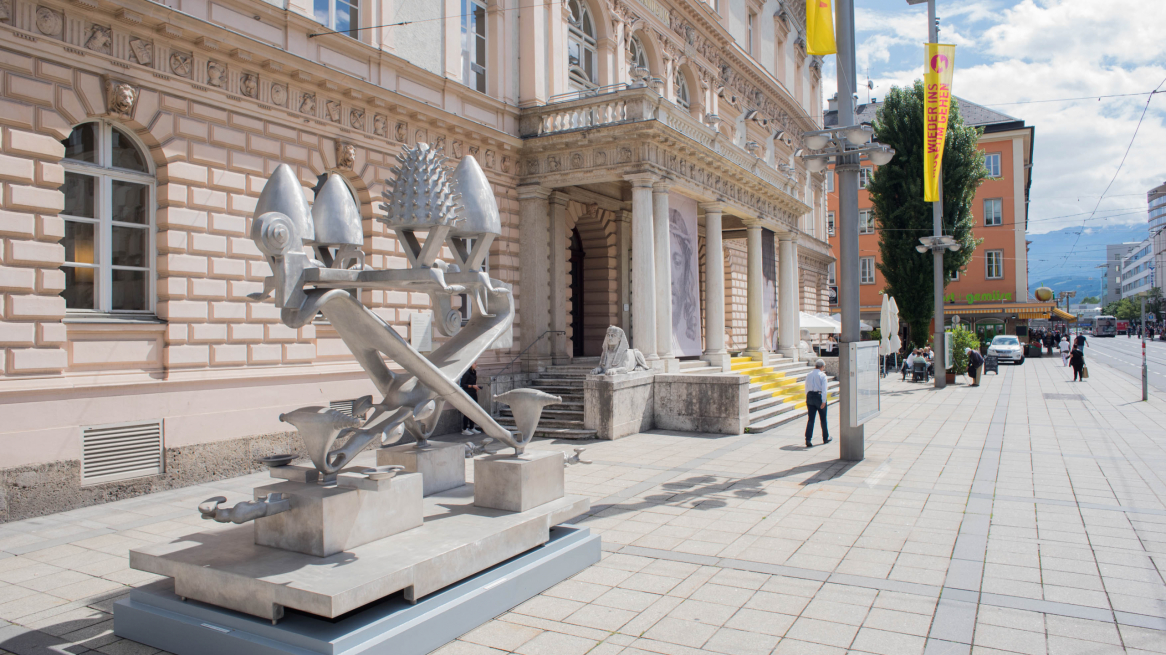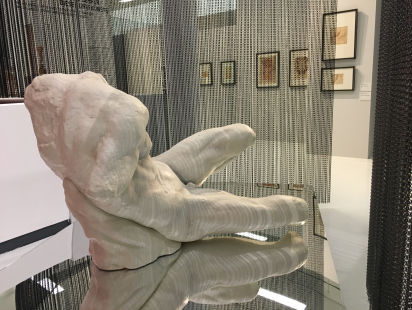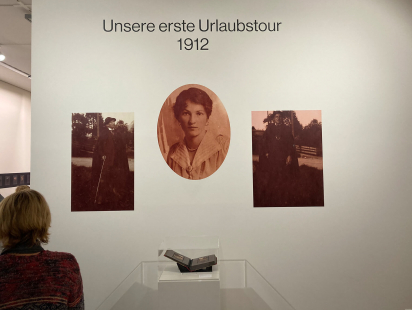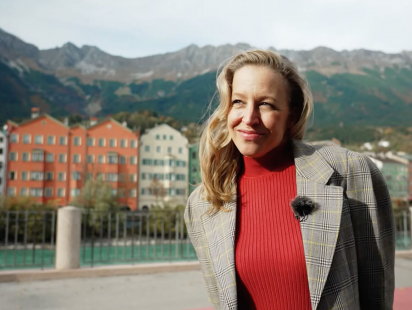In the center of Innsbruck there are many contemporary works of art that you can "meet" in parks, streets and squares. I started to tell about some of them in a first article for this blog. And today we continue, devoting our attention to three artists who, with their works, mark the public space. Three sculptors - Rudi Wach, Bruno Gironcoli and Lois Anvidalfrei - whose works are very recognizable and different from each other, as you will see, but who all put at the center of their artistic research the man and the human
THE MINOTAUR, BETWEEN HIGH AND LOW
Rudi Wach is Tyrolean by birth. Born in 1934, at the age of 21 he moved to Milan, where he studied at the Accademia di Belle Arti di Brera under Marino Marini and where he still lives. There are two sculptures by this artist that we will see today. The first stop is at Adolf-Pichler Platz, number 3. Between the Hotel Penz and the side entrance to the Rathaus Galerie, a minotaur just over two metres high "dances" on a pedestal. The title of this bronze sculpture is Triumphierender. One foot firmly planted on the ground, the hands and taurine head turned upwards. The surface of this being is irregular and pulsating, the form and dynamic pose are very expressive. Mythological subjects are a theme dear to the artist. In this case in the minotaur two souls merge - or fight - one animal and one human. Out of metaphor, a duality that is always current. In fact, as Rudi Wach himself declares in this short video available on youtube, "my work is the search for the human soul" and again "my work is a deposit of human energy through light". And you only have to look at this sculpture to understand his words. Wach's sculptures are very recognizable and walking around the city I'm sure you can spot other works of his at first glance.
THE CRUCIFIX ON THE BRIDGE OVER THE INN
We walk to theInnbrücke, the bridge over the river Inn near the market place. On the left side of the bridge is a bronze crucifix. This is also a work by Rudi Wach, although it doesn't look like it at first glance. The surface is polished and the shapes are very elegant and linear. It is a work from the 1980s, when the artist's sign language was different from that of the last twenty years. The sculpture, designed for this bridge, actually arrived there only in 2007, because the nudity of Christ on the cross had aroused protests and made the artist opt for a more sheltered place, in the cloister of the museum of popular art in Innsbruck. Apart from these facts, the position of this sculpture gives it even more strength. The crucifix, with its hieratic and strong tranquillity, stands out against the landscape - or perhaps we could venture to say that it dialogues with it. Thus the background - the sky, the mountains, the rushing water of the Inn and the rows of colourful houses on the Innstraße, depending on the viewer's point of view - participate in the work. I recommend here the customary souvenir photo.
THE LEGEND OF ST. GEORGE IN A CONTEMPORARY KEY
If you walk along Maria-Theresienstraße in the direction of the Triumphal Arch, you will find the Altes Landhaus at number 45. Go through the gate - which is usually open - and you will find yourself in an inner courtyard. In front of you is St. George's Chapel, an example of Tyrolean baroque. On the facade, bronzes by the South Tyrolean sculptor Lois Anvidalfrei (born 1962) have been standing out since 2009. The four niches are almost like small stages on which the artist presents four highlights from the legend of St. George in a contemporary interpretation.
Lois Anvidalfrei's sculptures on the facade of the Georgskapelle in Innsbruck. Photo © Laura Manfredi.
WHERE IS THE DRAGON?
On the Fassade der Hoffnung (Facade of Hope) Lois Anvidalfrei speaks of the struggle between good and evil, both as a struggle within man and, more generally, within society. Consequently, you won't find St. George (good) nor the dragon (evil) but a man who seems to fall into the abyss. The works are entitled Das Entsetzen über das Böse, Die Segnung, Das haltlose Böse, Die Bekehrung (counterclockwise, from left to bottom). We could translate the titles - hoping not to betray the German titles too much - as "The horror of evil", "The blessing", "The labile/unstable evil", "The conversion". As Philippe Daverio writes on Lois Anvidalfrei's website to describe her artistic research: "It is the human being who measures himself against the dimension of nature and the heavens. It is the human being who measures himself against the metaphysics of the divine. And in doing so he reveals his own dimension, which is physical and pulsating, alive and suffering far more than suffering."
A figure from Lois Anvidalfrei's Fassade der Hoffnung on the facade of the Georgskapelle in Innsbruck. Photo © Laura Manfredi.
GIRONCOLI AT THE FERDINANDEUM
In front of the Ferdinandeum Museum in Museumstraße 15, a sculpture by Bruno Gironcoli has been standing on the left since 2020. The Austrian-born artist was born in 1936 and died in 2010. He achieved international recognition and represented Austria at the 2003 Venice Art Biennale. He is primarily known for his work as a sculptor and, in particular, for his monumental works, such as the one that can be seen in front of the Ferdinandeum. Observing the sculpture "Ohne Titel" with attention we recognize that it is an assemblage of forms, objects, small human bodies. Everything is unified by the silver metallic colour and the smooth, polished surface. In this way the elements assembled together are no longer distinct pieces, but parts of a whole, which (to me) evokes imaginary machinery. Man was at the centre of his artistic research even if he did not model human bodies; in particular he was interested in the relationship of the human with technique and nature. And Gironcoli investigates this relationship by building three-dimensional compositions with shapes and objects that become almost fetishes, in a coexistence of harmonies and disharmonies. You can see a roundup of his sculptures in the short video about his 2019 exhibition at the Shirn Kunsthalle in Frankfurt to get an idea of his artistic language.
Bruno Gironcoli's sculpture in front of the Ferdinandeum Museum in Innsbruck. Foto © Christoph Schwarz.
USEFUL INFORMATION
or how to find the above sculptures quickly
Rudi Wach, Triumphierender
Adolf-Pichler Platz near number 3 (between Hotel Penz and the side entrance to the Rathaus Galerie)
Rudi Wach, Crucifix
Innbrücke
Lois Anvidalfrei, Fassade der Hoffnung, at the Georgskapelle
Maria-Theresienstraße 45, Altes Landhaus, in the inner courtyard
Bruno Gironcoli, Ohne Titel
Museumstraße 15, in the square in front of the Tiroler Landesmuseum Ferdinandeum
Rate this article
Show me the location on the map
A visual artist from Milan who not only works with brushes and canvases but also loves writing about art, culture, music, design and creativity.
Similar articles
It is open until April 18, 2022 at the regional museum Ferdinandeum in Innsbruck…
It was some years ago that Roland Sila, head of the Ferdinandeum library, discovered…
On December 7, a new comedy series starring Nina Proll will start on ServusTV. "Aus die Maus"…
Innsbruck couldn't have dressed up better this October. The air is bone-chillingly cold, the view of the…

